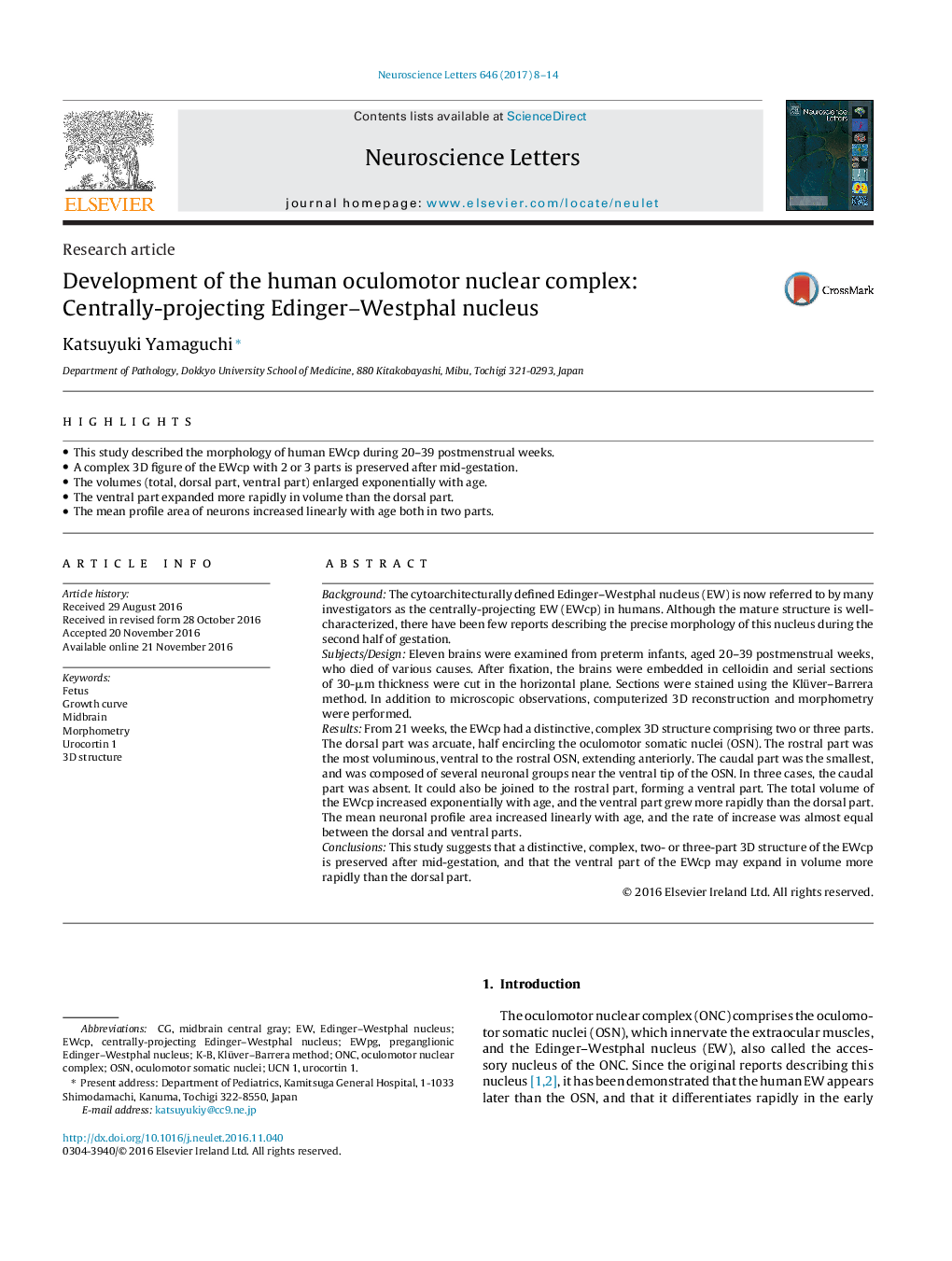| Article ID | Journal | Published Year | Pages | File Type |
|---|---|---|---|---|
| 5738694 | Neuroscience Letters | 2017 | 7 Pages |
â¢This study described the morphology of human EWcp during 20-39 postmenstrual weeks.â¢A complex 3D figure of the EWcp with 2 or 3 parts is preserved after mid-gestation.â¢The volumes (total, dorsal part, ventral part) enlarged exponentially with age.â¢The ventral part expanded more rapidly in volume than the dorsal part.â¢The mean profile area of neurons increased linearly with age both in two parts.
BackgroundThe cytoarchitecturally defined Edinger-Westphal nucleus (EW) is now referred to by many investigators as the centrally-projecting EW (EWcp) in humans. Although the mature structure is well-characterized, there have been few reports describing the precise morphology of this nucleus during the second half of gestation.Subjects/DesignEleven brains were examined from preterm infants, aged 20-39 postmenstrual weeks, who died of various causes. After fixation, the brains were embedded in celloidin and serial sections of 30-μm thickness were cut in the horizontal plane. Sections were stained using the Klüver-Barrera method. In addition to microscopic observations, computerized 3D reconstruction and morphometry were performed.ResultsFrom 21 weeks, the EWcp had a distinctive, complex 3D structure comprising two or three parts. The dorsal part was arcuate, half encircling the oculomotor somatic nuclei (OSN). The rostral part was the most voluminous, ventral to the rostral OSN, extending anteriorly. The caudal part was the smallest, and was composed of several neuronal groups near the ventral tip of the OSN. In three cases, the caudal part was absent. It could also be joined to the rostral part, forming a ventral part. The total volume of the EWcp increased exponentially with age, and the ventral part grew more rapidly than the dorsal part. The mean neuronal profile area increased linearly with age, and the rate of increase was almost equal between the dorsal and ventral parts.ConclusionsThis study suggests that a distinctive, complex, two- or three-part 3D structure of the EWcp is preserved after mid-gestation, and that the ventral part of the EWcp may expand in volume more rapidly than the dorsal part.
